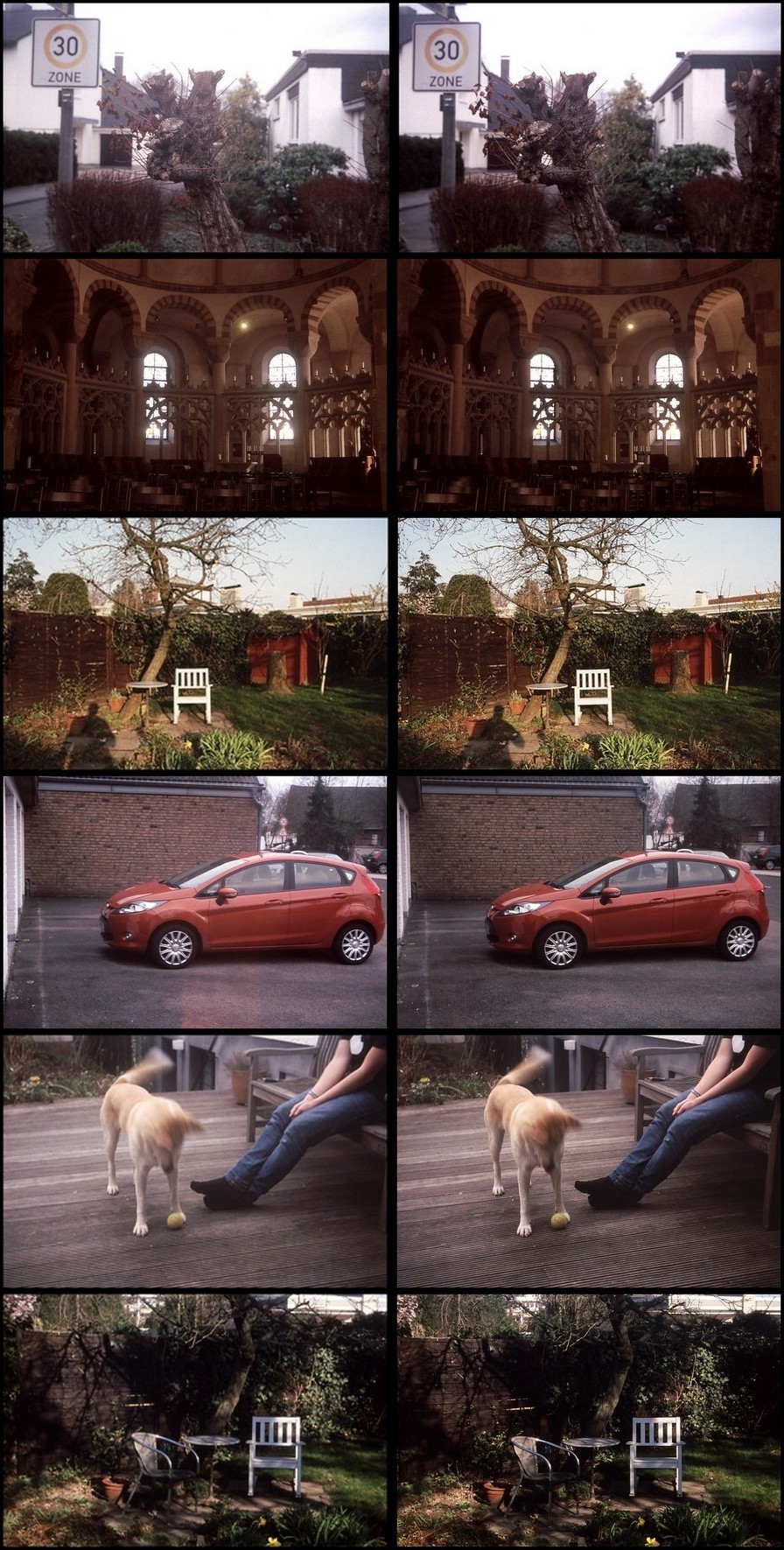Stereo Camera made from two
35mm Cameras (2012)
Also, there is no way around admitting that the resulting stereo base (the lens to lens distance) is pretty wide, even when using these miniature cameras.
With regard to the "ideal" stereo base, there are three concepts, as far as 35mm film is concerned. All three concepts have disadvantages (following the classic motto "Cost, Quality, Time - pick two"
1) The full 24x36 format can be used together with the ideal 65mm stereo base - at the cost of lots of unused film
2) The full 24x36 format can be used at full film utillisation - but the stereo base will be bigger than ideal.
3) Or, using the ideal stereo base, the film can be used up entirely, with a smaller image format
Comercially available stereo cameras usually have smaller image formats (24x22, 24x30). For option 2 there are DIY solutions (using e.g. Rollei 35 cameras).
Option 1) cameras have been available from the German company RBT. Such a camera I wanted to make myself, again from two Dacora Dignette cameras, well suited because of their simple construction and their fine Rodenstock lenses.
The following picture shows camera parts after disassembly and "cutting".

I set out to try and keep most of the camera functions - the Dignette sports a true range finder and a coupled meter, with needle display in the viewfinder. Also, I certainly aimed for a common shutter cocking operation and a common shutter release. Unfortunately, much went wrong during disassembly and assembly, so that I would have had to start again with two new cameras, in order to keep range finder and meter functions (the whole stuff spent months in a dark corner...).
Meanwhile, I have dug out the bits and pieces and have tried to bring this ill-fated project to an end, by deleting both range finder and meter function, but at least with common shutter cocking and a common (though not very elegant) shutter release.
This is how the camera looked before painting:

And
this is how it looks now, in "professional black"


Eleven
stereo pairs are produced on a standard 35mm roll of film (12
if
the film is put into the camera in the dark), and the stereo effect is
immediately obvious when looking through the old viewer below:


